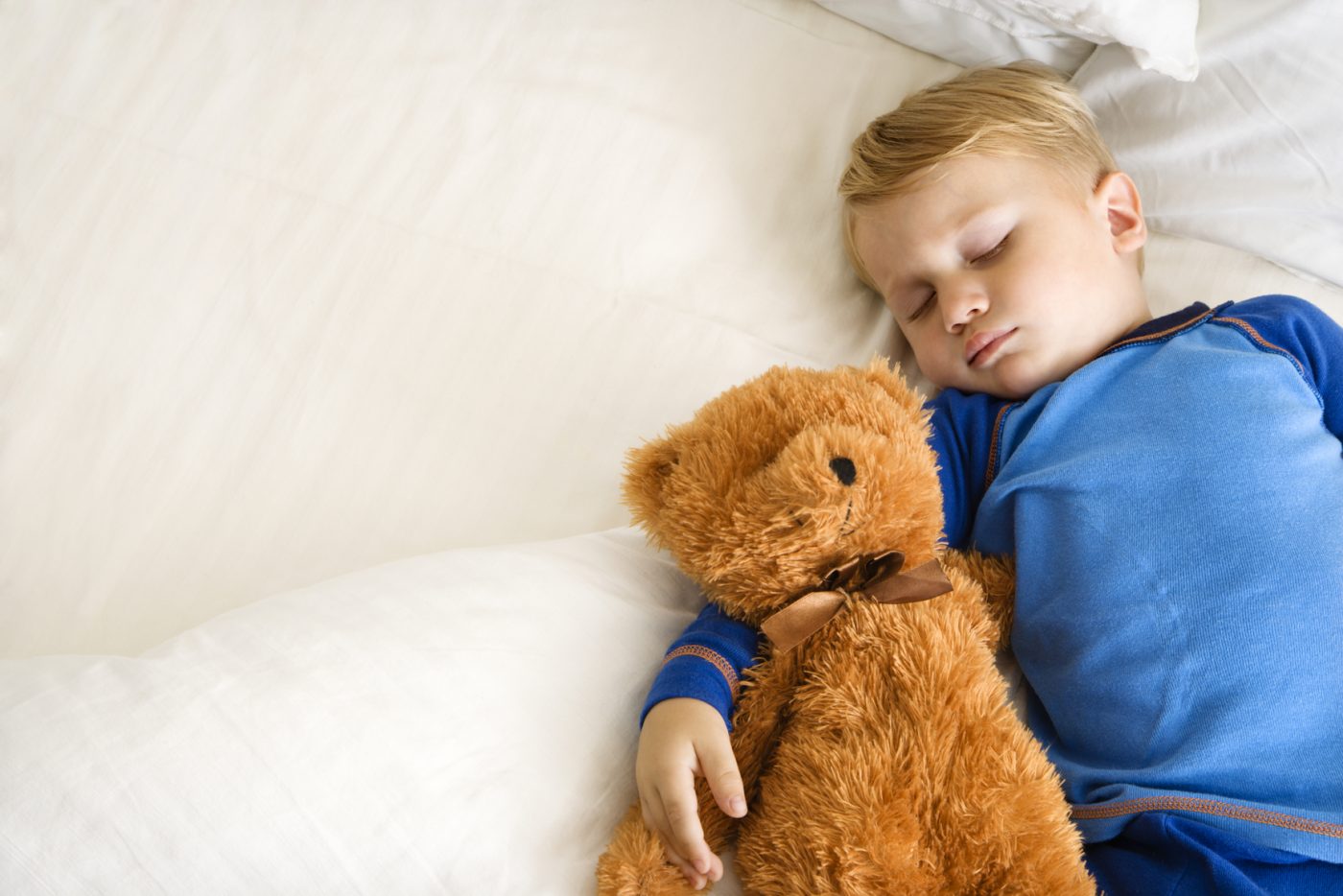
As babies begin to develop emotionally and cognitively, they become increasingly aware that they are an individual and that their parents are sometimes unavailable to comfort them immediately. Whilst babies, toddlers and children need their care givers to be emotionally available to them, toddlers and older children are also able to receive comfort from cuddling a teddy or blanket. This use of a comforter is an important milestone in your child’s development as she becomes able to use a comforter as a way of ‘self soothing.’ Psychologists refer to them as ‘transitional objects’ as children transfer the role of a secure base from their parent to an inanimate object that they have with them. Comforters have a powerful ability to make children feel more secure.
Comforters can also be such a powerful trigger of sleep that some children will instinctively yawn and snuggle to sleep when they are handed their comforter or teddy bear. Also, when a child comes into a light sleep, if their comforter is with them, they may begin to use the comforter to touch base and then return to sleep. This means they are less likely to need you to soothe them back to sleep and may drop off more quickly when they wake in the night.
Comforters are a great prop in your child’s toolkit and help her to cope with uncertainty, anxiety, pain and fear. One of the drawbacks is that if your child becomes upset at times when she cannot have her comforter (e.g. it has become lost or isn’t with them), she may get very wound up and more distressed than she would have otherwise.
Try not to worry about your child being devoted to a teddy or a blanket. This deep attachment to a comforter is very common and most children tend to reduce the time they rely on their comforter as they get older.
As long as constantly holding the teddy or blanket isn’t stopping your child from playing and leading a happy, energetic life, don’t worry too much.
Most children grow out of having a comforter with them at all times, but there is no time when a loved teddy bear should be consigned to the bin. What tends to happen is that they stay on your child’s bed, and as she get older and more self-conscious she might choose to put the comforter away or even hand it on.
Most nurseries, preschools, and early years educators are sensitive to a child’s need to bring her comforter with her, especially during settling in. Children use comforters as a prop to help support their internal emotional resources and resilience to manage a situation – and this should be encouraged. When your child can use a comforter when you are not there, it is one of the first examples of emotional self-regulation. It can be a stepping-stone to help your child cope with fears and anxieties that they face without you each day.
In time, the comforter can be left in the ‘precious box’ or a bag on your child’s peg for special situations like a grazed knee. Soon many children are happy to wait until they get home to cuddle their teddy.
As a parent, you can use similar tactics if you are out and about. Instead of taking the comforter everywhere (where it can be easily lost) it can instead travel in the car or your bag, so your child isn’t constantly carrying it around. Parents need to be sensitive to their child and their needs and judge how best to manage this and not be motivated by their fear of judgement by other adults.